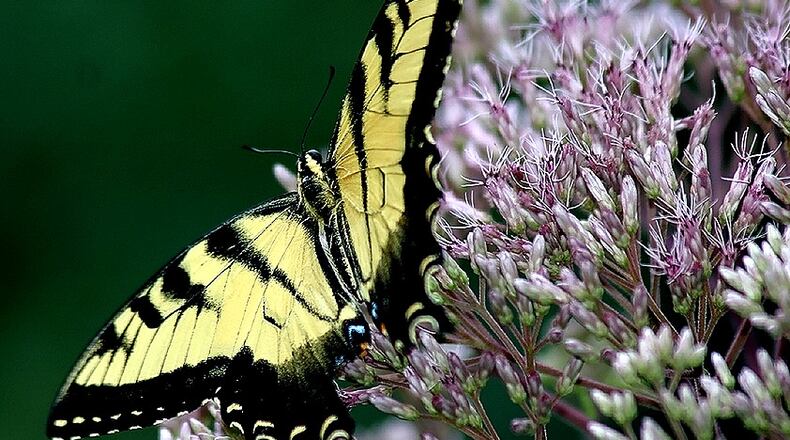Blooming now in moist, sunny spots in Georgia’s woods, meadows and roadsides are tall, showy, purplish-pink wildflowers known as Joe-Pye weeds, some of the state’s most iconic wild plants of late summer.
I use the plural when talking about Joe-Pye weed because Georgia (mostly North Georgia) is home to four native species of closely related plants all bearing the name Joe-Pye.
Which inevitably brings up a question: Was there really someone named Joe Pye?
Yes, or so the story goes. Joe Pye was said to be a New England herb doctor — some say a Native American — who was adept at making potions from wild plants to treat a variety of human ills. Known as a “yarb” man, his specialty was reducing fevers.
Some of his favorite plants for that purpose belonged to a group of hardy, closely related late-summer wildflowers. He gained famed when brews made from the plants supposedly stopped a typhoid fever epidemic in Colonial Massachusetts. The plants came to be called Joe-Pye weed, making Pye one of just a handful of herb doctors to have a plant named in his honor.
All of the four Georgia species that we call Joe-Pye weed today belong to the genus Eutrochium (formerly Eupatorium). The two that you’re most likely to see blooming now are the hollow Joe-Pye weed and sweet Joe-Pye weed (flowers smell of vanilla). Pale Joe-Pye weed and spotted Joe-Pye weed (so-called because of its stem color) also are found in Georgia. They grow 3 to 8 feet tall; their large, eye-catching flowers range from deep pink to purplish pink and lure pollinators.
Another close cousin of Joe-Pye weed now blooming across Georgia is the white-flowered boneset, once said to be helpful in setting broken bones. The reason was that its peculiar-growing leaves appeared to grow right through the stem — a sign that the plant would fix broken bones. Leaves were wrapped around fractures in hopes that the patient would be cured. The remedy didn’t work, but the name stuck: boneset.
IN THE SKY: From David Dundee, Tellus Science Museum astronomer: The moon will be new on Tuesday night and a thin crescent by Thursday night. Mercury is low in the east about an hour before sunrise. Venus is higher in the east and rises about three hours before sunrise. Mars rises in the east an hour before midnight. Jupiter and Saturn rise in the east just before sunset.
About the Author
Keep Reading
The Latest
Featured


